How to Decorate a Bookshelf for a Stylish and Organized Space
A well-decorated bookshelf adds character and style to any room while keeping your space organized. To decorate a bookshelf effectively, mix books with decorative items like plants, frames, and objects of different heights and textures to create balance and visual interest. This simple approach turns a plain shelf into a curated display that reflects your personality.
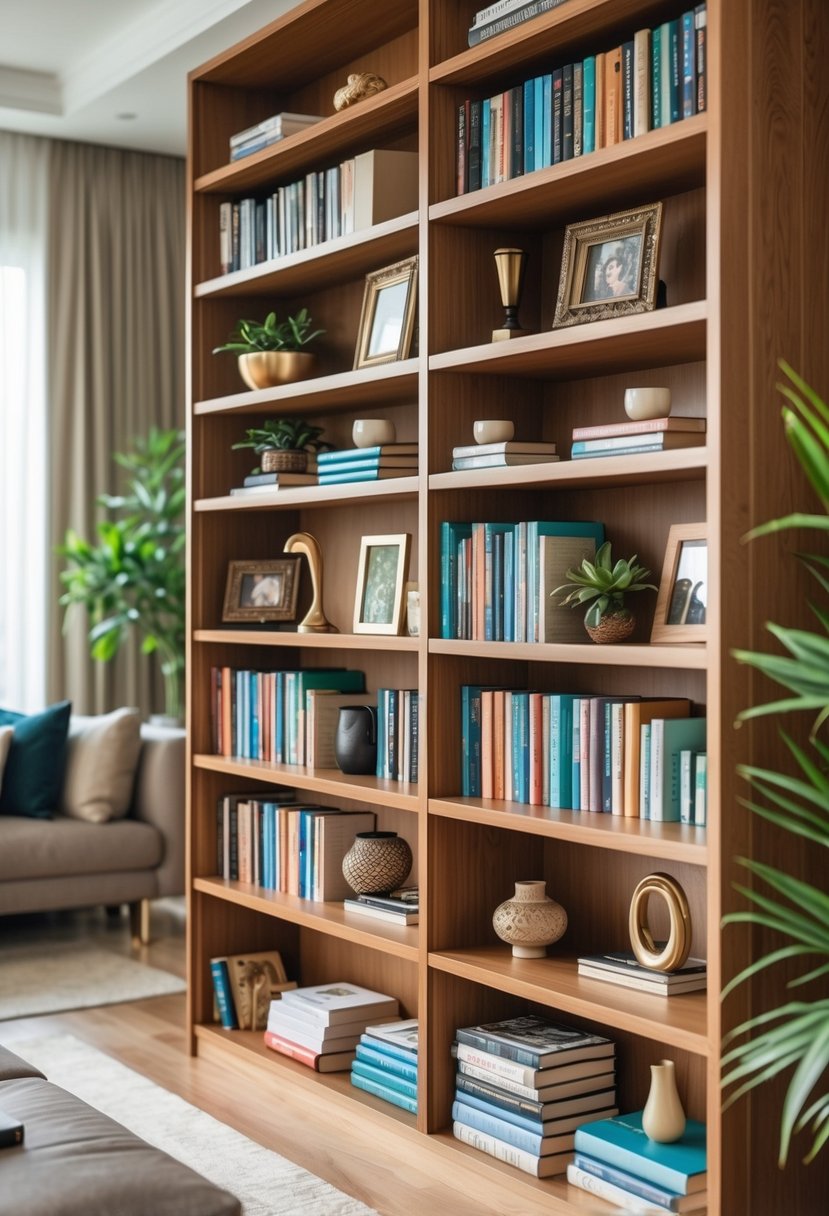
When I style my bookshelf, I think about layers and variety. Grouping items in odd numbers, using color blocks, and adding personal touches make the shelves feel alive and inviting. It’s not just about filling space but arranging pieces to make the whole look thoughtful and pleasing.
Planning Your Bookshelf Design
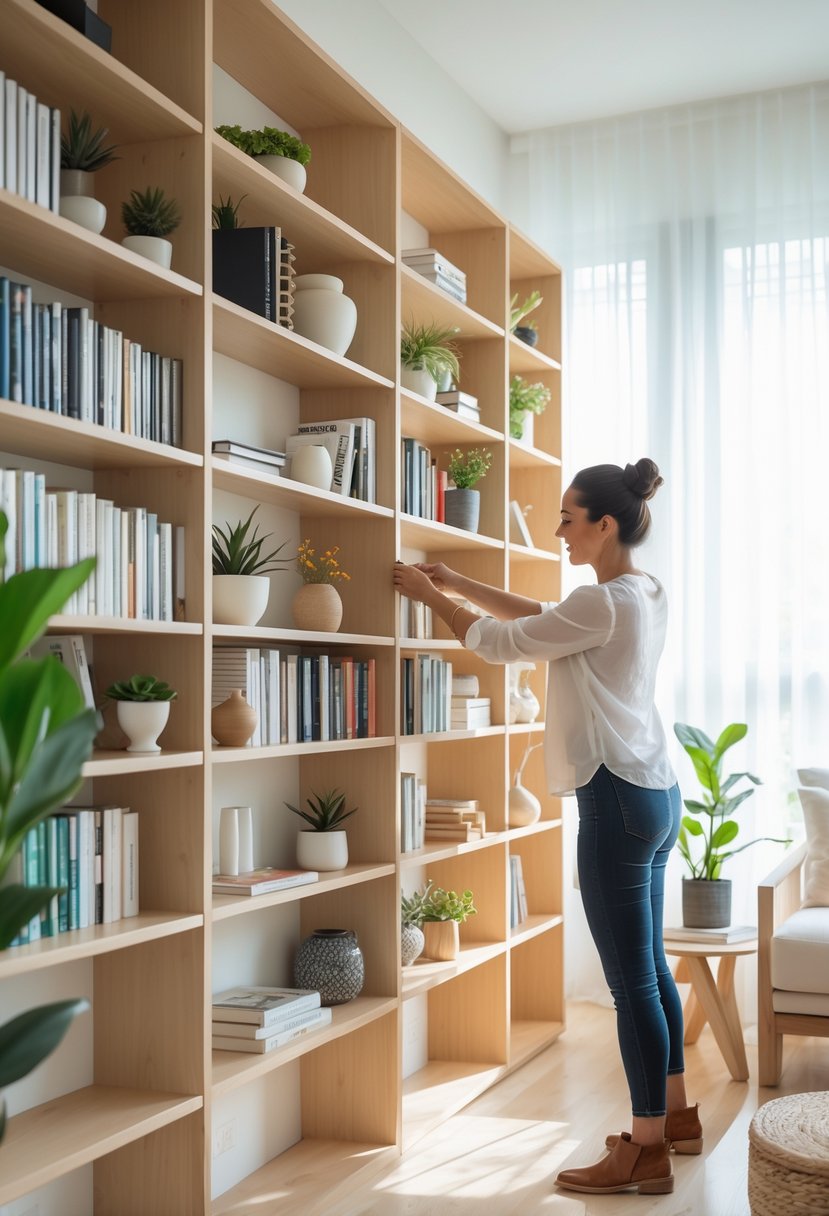
To create a well-styled bookshelf, I start by deciding on a clear look that matches the room. Next, I measure the space to know how many items fit. Then, I carefully choose and organize which books to display, balancing them with decorative pieces.
Choosing a Style and Theme
I pick a style that fits the room’s mood and my personality, like modern, rustic, or classic. Sticking to one theme helps the space feel connected. For example, I use mostly neutral colors and natural materials for a calm, minimalist look.
I also think about the purpose. If I want my shelf to look busy and cozy, I add many small items and mix books by color or size. If I prefer clean and simple, I leave more empty space and group similar objects.
Assessing Shelf Space
Measuring the height, width, and depth of my shelves helps me know what fits. I note which shelves are adjustable so I can store taller books or taller décor pieces.
I also look at the shelf structure. Built-ins might have uneven spaces, so I plan taller items on some shelves and smaller ones on others. Freestanding shelves may allow more rearranging.
Sorting and Selecting Books
I sort my books by subject, size, or color to decide what to show. I don’t place every book on the shelf. Instead, I pick favorites or ones that add to the style.
To keep things interesting, I mix books with decorative items. For example, I stack a few horizontally and place a small plant or photo on top. This breaks up rows and adds texture.
Arranging Books for Visual Impact
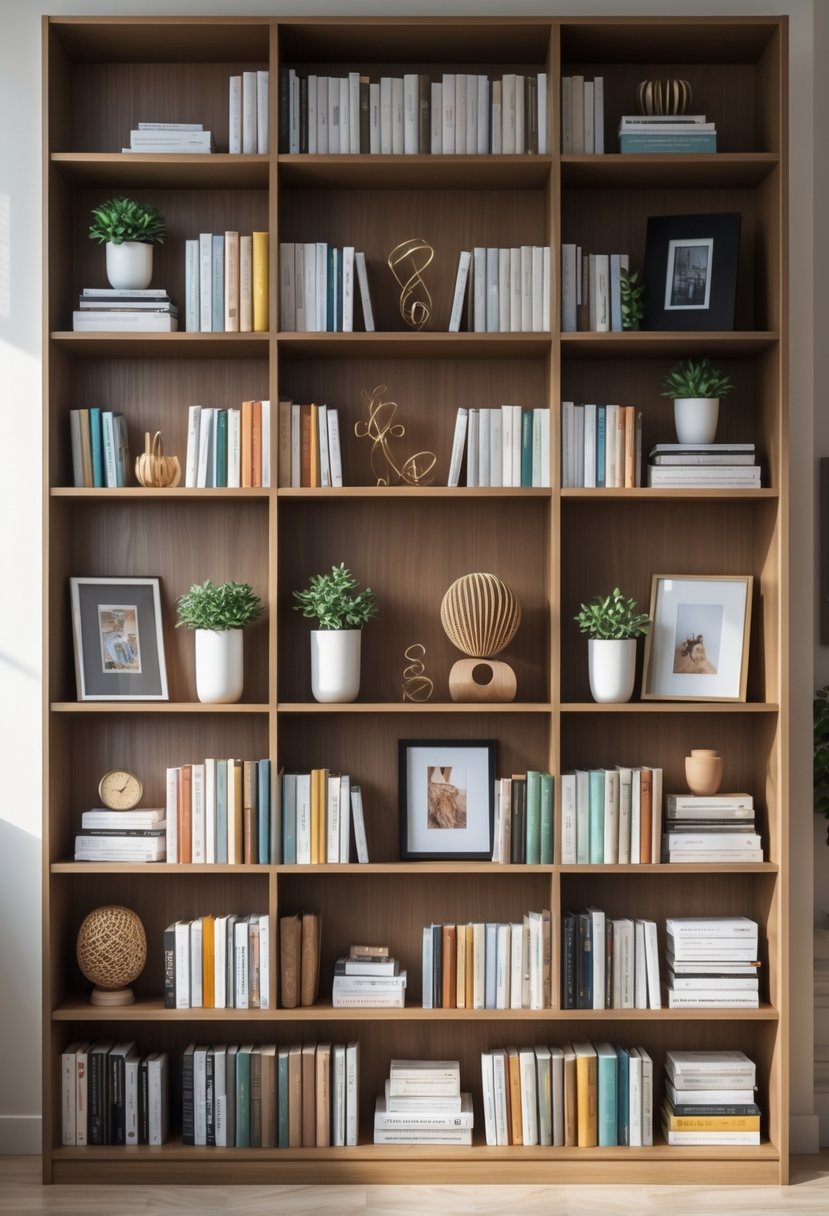
I focus on how books are placed to create a clean, interesting look. Choosing different ways to stack, using color patterns, and mixing book sizes all help the bookshelf look balanced and stylish.
Vertical and Horizontal Stacks
I use a mix of vertical and horizontal stacks to add variety. Standing books upright is classic and keeps titles easy to read. Placing a few stacks of books lying flat breaks up the lines and adds texture.
Horizontal stacks can also serve as small platforms for decor like plants or photo frames. I try to avoid stacking too tall to keep the shelf stable. Balancing both directions across the shelf stops it from feeling too rigid or too messy.
Color Coordination
Organizing books by color draws the eye and creates a clear pattern. I group books with similar colors together, such as all blues or all earth tones, for a smooth flow that feels planned.
Using color coordination, I can highlight parts of the shelf or blend books with nearby decor. Sometimes I mix strong colors with neutral shades to keep the arrangement from being overwhelming.
Mixing Book Sizes
Placing different sized books helps break up monotony. Taller books go well on one side, with shorter ones nearby to contrast. I often arrange books in clusters of odd numbers—like three or five—to make the grouping more pleasing to the eye.
Mixing sizes also allows for natural breaks where decor items can be added. This variety stops the shelf from looking flat and helps guide the viewer’s eye through the display.
Styling With Decorative Accents
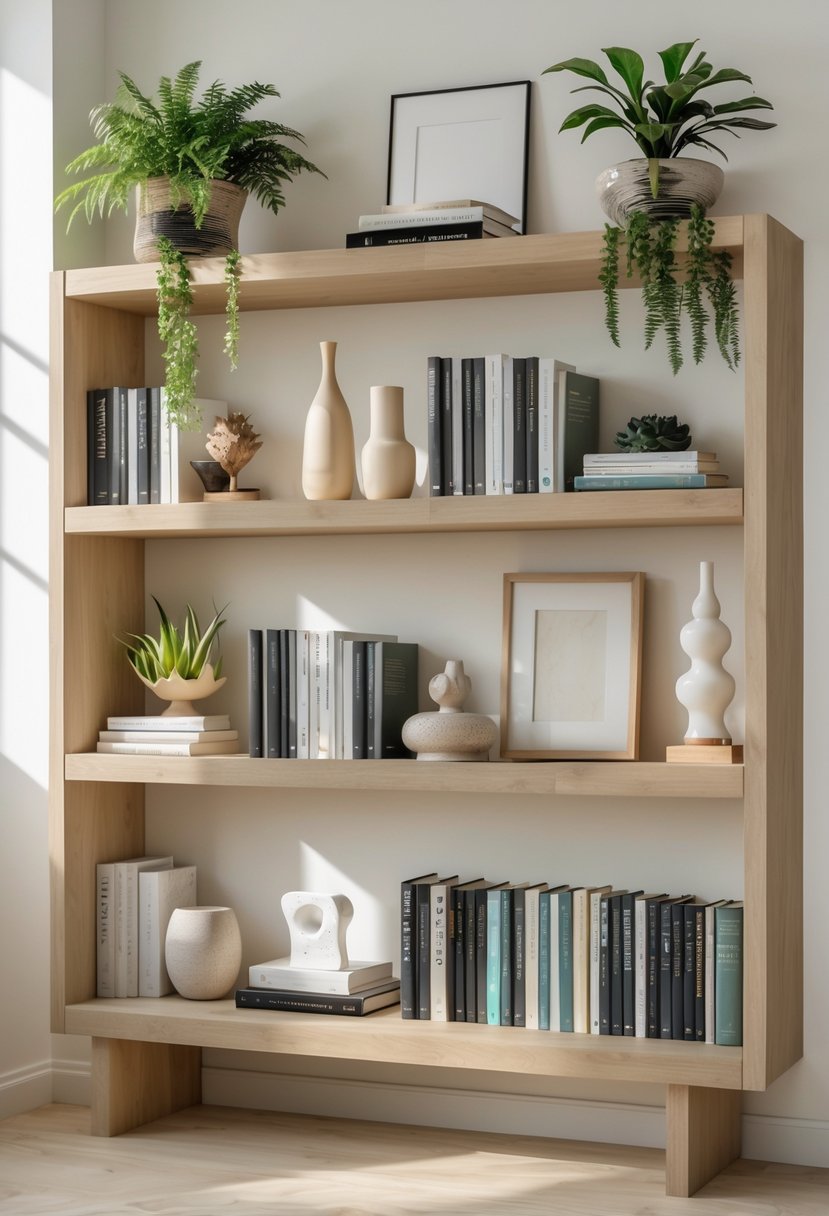
Adding decorative accents can bring life and personality to your bookshelf. Small touches like plants, art, and unique accessories create interest and balance. Careful spacing and choosing the right items help keep the look neat and inviting.
Incorporating Plants and Greenery
I like to add small plants or greenery to soften the look of bookshelves. They bring color and texture without overwhelming the space. Succulents, air plants, or small potted ferns work well because they need little care and don’t take up much room.
Placing plants at different heights gives the shelf variety. I often use a taller plant next to a stack of books or beside a decorative item. This breaks up straight lines and adds a natural feel to the arrangement.
Showcasing Art and Personal Items
Personal items and small art pieces make a shelf feel more meaningful. I choose framed photos, small sculptures, or postcards to show memories or style. These pieces give a shelf a unique story that goes beyond books.
I don’t place too many items close together. Instead, I leave enough space around each art piece to avoid a cluttered look. Grouping smaller personal items on one shelf can create a focal point that draws the eye.
Using Bookends and Accessories
Bookends are both useful and decorative. I use bookends to keep my books upright while adding style. They come in many shapes—metal, wood, or even quirky designs. Matching bookends can tie the shelf together visually.
Other accessories, like candles or vases, add layers to the look. I mix materials to create contrast, such as pairing a ceramic vase with metal bookends. This adds texture and keeps the shelf from looking flat or boring.
Balancing Negative Space
I pay attention to empty spaces on my shelves, called negative space, to make the display feel open. Leaving gaps between books or decorative objects keeps the shelf from feeling packed too tight.
Negative space acts like a rest for the eyes. I often place items in odd numbers and leave some shelves less filled. This creates rhythm and balance, making the overall look calm and organized.
Maintaining and Refreshing Your Bookshelf
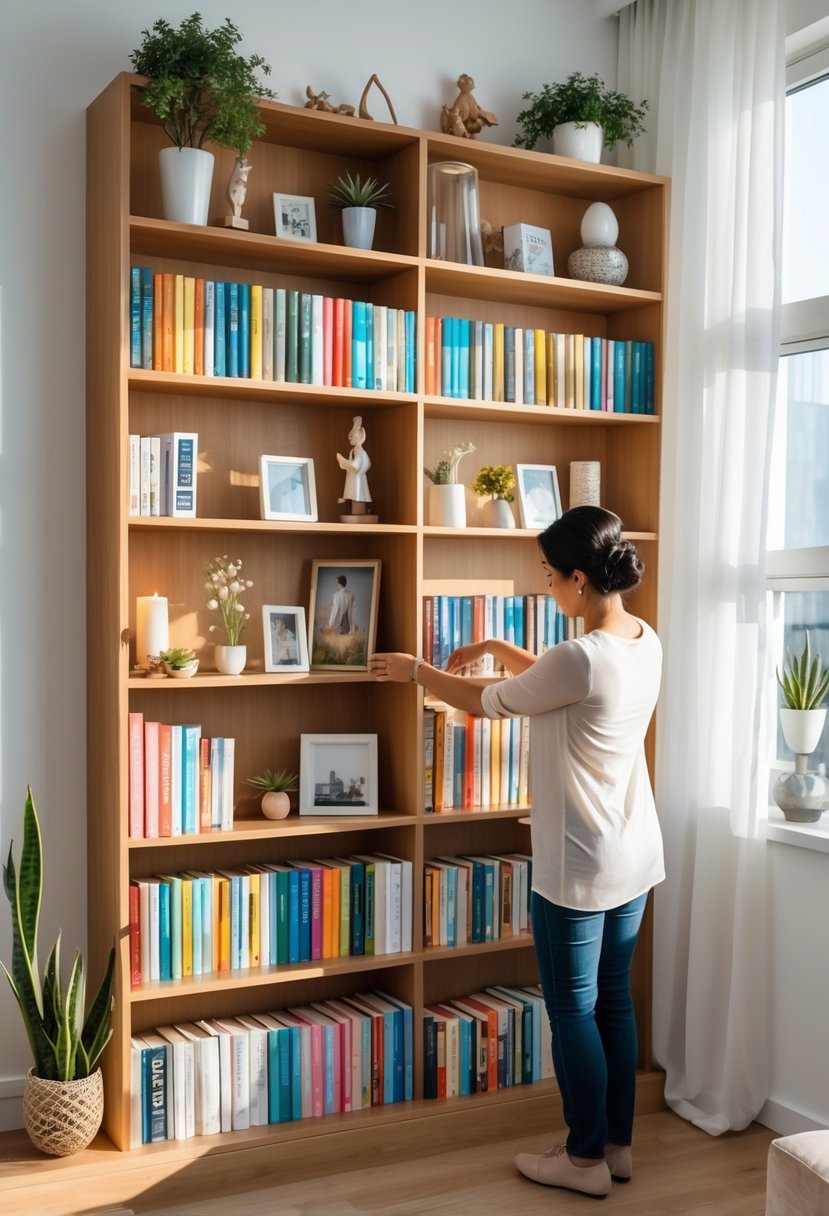
Keeping a bookshelf looking good takes regular care and some changes over time. Adjusting items to fit the season or theme keeps it interesting. Also, cleaning and organizing help the shelf stay neat and easy to use.
Seasonal and Thematic Updates
I like to swap out decor on my bookshelf to suit different seasons or themes. For example, in the fall, I add small pumpkins or warm-colored objects. In winter, I might include candles or pinecones in neutral colors. Changing a few pieces this way keeps the shelf feeling fresh without a full redo.
To create a theme, I group items by color, subject, or style. A travel theme might include postcards, small souvenirs, and books about places I’ve visited. This makes the shelf tell a story and feel more personal. Limiting updates to a few items prevents the space from feeling cluttered.
Cleaning and Organizing Strategies
Cleaning my bookshelf regularly keeps dust and dirt from building up. I remove all objects and books, then wipe down shelves with a soft cloth. It helps keep wood or paint in good condition and shows me what to rearrange.
For organizing, I sort books by size or category and place objects to break up rows of books. Using baskets or boxes for small items keeps things tidy. I make sure to leave some empty space on shelves to avoid overcrowding, which helps the entire display look clearer and more inviting.
